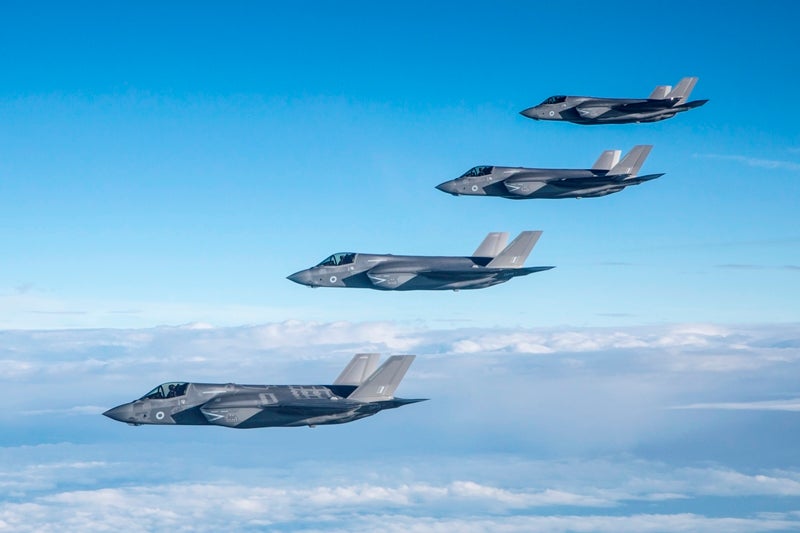
F-35 Airforce Technology: Survey Reveals Mixed Opinions on Controversial Jet
The poll comes as last week Poland signed a contract with Lockheed Martin worth $4.6bn to procure 32 F-35 combat aircraft in a move that will significantly upgrade its air power and marks the first Eastern European country to sign up to the programme.
This month Air Force Technology polled our readership to see whether the industry still believes the fighter is a worthwhile investment for Air Forces to make. The majority of readers supported the aircraft, saying it was worth the cost, however, nearly 32% of readers said that it was not worth it.
How well do you really know your competitors?
Access the most comprehensive Company Profiles on the market, powered by GlobalData. Save hours of research. Gain competitive edge.

Thank you!
Your download email will arrive shortly
Not ready to buy yet? Download a free sample
We are confident about the unique quality of our Company Profiles. However, we want you to make the most beneficial decision for your business, so we offer a free sample that you can download by submitting the below form
By GlobalDataThe long-running programme has consistently attracted industry headlines for bad and good, with new countries signing up to the programme while others are kicked out, highlighting the fighter as not just a piece of defence equipment but a political tool.
Commenting on the programme, GlobalData Defence Analyst Anthony Endresen said: “Exports of major programmes like the F-35 are rarely, if ever, simply based on technical considerations. The political dimension looms large in the decision-making process for countries that are or would be F-35 market territory, as seen in the first foreign decision to acquire the F-35 (Norway).
“The decision there was largely based on the government to government relationship and converging policy. The financial aspect will thus affect platform numbers, in some instances, but is not the primary element in the platform selection process.”
Despite lingering issues, as reported in the 2019 Annual Report From the US Department of Defence (DoD) Office of the Director, Operational Test & Evaluation, the F-35 has seen continued interest, as evidenced by the confirmation of Poland’s purchase and a possible sale to Finland on the cards under the country’s HX challenge to replace its fleet of F/A-18 C/D Hornet aircraft.
Lingering issues
The Pentagon test office’s annual report on DoD programmes found that the aircraft has 873 unresolved deficiencies from ongoing issues with the aircraft’s gun on the US Air Force (USAF) variant, to a number of outstanding software problems. The report found that the aircraft’s gun had ‘unacceptable’ accuracy and noted that the casing for the gun can also crack after use.
The gun problems do not affect the non-air force variants of the aircraft which have guns mounted on pods rather than within the airframe itself. As a result of this, the USAF has restricted which aircraft can use the gun to newer airframes from more recent production lots.
In January, the Pentagon announced it would begin a review into the aircraft’s engine programme to determine why more savings are not being made through subcontracting work. Pratt & Whitney, which makes the engines, said that since the programme’s inception through to recent productions lots it had reduced costs by around 55%.
In late 2019 it was also revealed that the fighter would not hit full-rate production as planned and could be delayed by a little over a year. Speaking at a press conference last October, US Undersecretary of Defense for Acquisition and Sustainment Ellen Lord said that the aircraft would miss the target for full-rate production by ‘up to 13 months’.
This marked another delay for the most expensive weapons system programme ever and will see the mass production of aircraft not take place until December 2020 or January of 2021.
Sales and strides
Despite these issues, interest in the aircraft is still high. The Royal Navy is has a current F-35 deployment on the HMS Queen Elizabeth, marking pilots getting one step closer to carrier qualification, and there have been recent sales to Singapore and Poland.
The aircraft is also up for evaluation in Finland’s programme to replace its current Air Force fleet with a more modern fighter – Lockheed Martin has sent four F-35s to take part in evaluations as it competes against Eurofighter, Dassault, Saab, and Boeing to again increase the aircraft’s user group.
Last year the aircraft also reached a significant technological milestone, with the USAF successfully testing a secure data-link between the F-35 and F-22. Both are stealth fighter jets and the data-link allows the two aircraft platforms to communicate targeting, location and other data.
In January, the US State Department approved the sale of 12 F-35B variant jets to Singapore, adding another country to the pool of users – which is designed to improve interoperability between like-minded nations and reduce the costs of the fighter overall as it moves towards larger production lots. The sale, worth around $2.75bn, includes other supporting equipment.
Lockheed Martin also recently announced it had begun production on Denmark’s first F-35 aircraft and the country has plans to order a total of 27 F-35 fighters.
Despite teething problems and issues, the fighter has seen a number of improvements in recent years as problems are ironed out and the unit cost per aircraft continues to decrease. Production lot 11 of the aircraft saw costs fall across the board to $89.2m for the F-35A, $115.5m for the F-35B, and $107.7m for F-35C.
Air Force Technology’s poll asked 1,576 readers “Is the F35 still a worthwhile investment?” 1076 voted yes, and 500 voted no.




